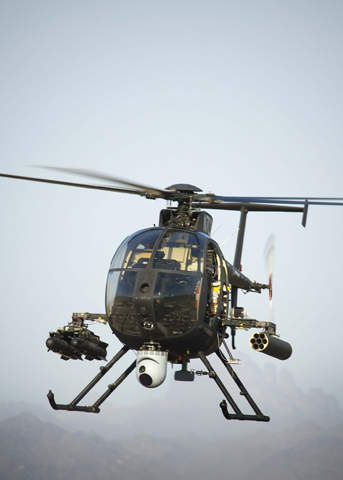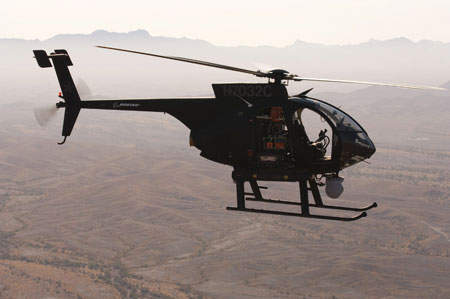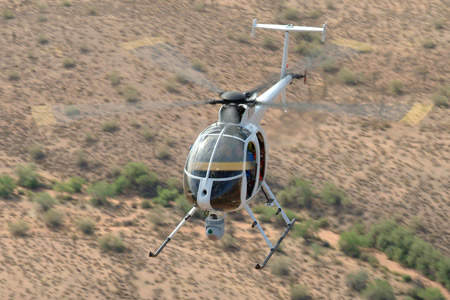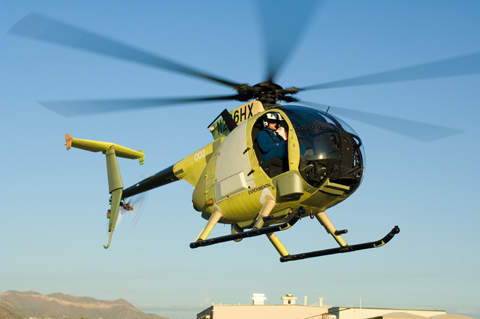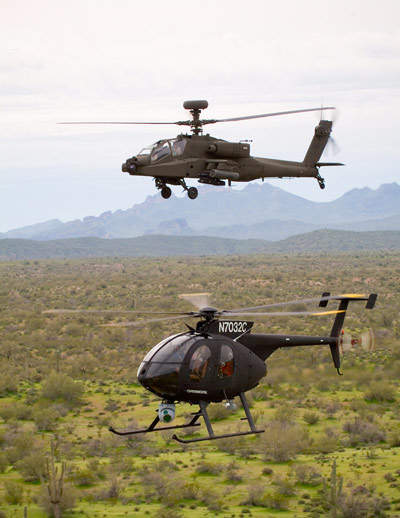The Boeing Unmanned Little Bird (ULB) demonstrator helicopter is a modification of the MD 530F single-turbine helicopter, designed for both manned and unmanned flight. The ULB can be remotely operated or programmed for autonomous operations in any of its three operational modes: dual pilot, single pilot or unmanned flight operations. The high payload capacity allows missions to include long-endurance intelligence, surveillance, and reconnaissance missions using heavy, high-capability sensors.
Unmanned Little Bird helicopter development
Boeing’s unmanned Little Bird (ULB) helicopter demonstrator successfully completed its first flight in September 2004 and the first autonomous take-off and landing was carried out in October 2004. During this phase of testing an on-board test pilot monitored the helicopter’s performance but did not actively fly the aircraft. The first truly unmanned flight was completed in July 2006.
In June 2011, Boeing’s ULB fitted with Thales Magic ATOLS (Automatic Take Off and Landing System) completed an automatic landing on the moving trailer, representing the motion of a vessel. France also conducted at-sea trials in 2012 with a H-6U ULB using an automatic deck landing system.
The business operations centres responsible for development of the Little Bird include Boeing Rotorcraft Unmanned Systems based in Mesa, Arizona, Boeing Advanced Systems, the Boeing Company in St Louis, and Boeing Integrated Defense Systems, St Louis.
Little Bird demonstrator (ULB) is a modification of the MD 530F single-turbine helicopter."
The unmanned Little Bird demonstrator aircraft has safely conducted more than 500 hours of UAV technology flight testing since its first flight in September 2004. The demonstrator has supported the definition and qualification of US Army manned and unmanned aircraft operations.
The ULB demonstrator won the American Helicopter Society’s AHS 2005 Grover E Bell award for the best advancement in rotorcraft research for that year.
The unmanned variant being internationally marketed by Boeing is based on the A/MH-6M aircraft. The A/MH-6 helicopters which are used by the US Army Special Forces are based on the MD 500 series.
A/MH-6X Mission Enhanced Little Bird helicopter
The A/MH-6X is an optionally manned or unmanned aircraft which is a hybrid of the ULB demonstrator and the A/MH-6M mission-enhanced Little Bird which is used by US Army Special Operations Command. The A/MH-6X completed its first flight in September 2006.
The payload capacity of the A/MH-6X is 1,543kg, nearly 50% greater than that of the ULB demonstrator.
The glass cockpit of the A/MH-6X includes advanced avionics systems such as multi-sensor data fusion, digital mapping, high bandwidth signal processing, data storage, digital radio and Ku band (11.0GHz to 14.5GHz) communications.
Unmanned Little Bird helicopter missions
For the US Army, the missions of the manned / unmanned A/MH-6X Little Bird could include surveillance, as a wideband communications node, resupply of troops in battlefield forward positions, the extraction of stranded soldiers in the battlefield and the rescue of downed pilots.
Unmanned helicopter design
The unmanned Little Bird helicopter air vehicle is based on the combat-proven MD 530F light helicopter which was first flown in 1982.
The helicopter is fitted with an articulated five-bladed main rotor of diameter 8.33m. The retention pins are removed to fold the blades for storage.
Mission payloads
The ULB helicopter can be fitted with a range of surveillance, communications and weapons to fulfil different mission requirements. The payload capacity is 1,090kg.
The flight tests of the ULB helicopter have been carried out with payloads of an L-3 Wescam MX-15 electro-optical and infrared sensor together with an L-3 Communications tactical common datalink (TCDL).
Weapons
The ULB helicopter can be armed with 2.75in rockets, the Viper Strike stand-off precision-guided munition (SOPGM) supplied by Northrop Grumman and a 12.7mm GAU-19 Gatling gun.
The Viper Strike SOPGM is a gliding munition for stand-off precision attack which uses GPS-aided navigation and a semi-active laser seeker. It is intended for operations that require a flexible (steep or shallow) angle of inclination, particularly in mountainous terrain or urban areas. The munition’s small size and precision provide low collateral damage in cluttered urban environments.
ULB guidance system
Boeing developed the ground control station and the air vehicle’s guidance and navigation systems. The air vehicle uses a conventional automatic take-off and landing procedure.
Engine
The 485kW Rolls-Royce 250-C30 turboshaft engine is mounted on an incline in the rear section of the fuselage.
The Global Unmanned Aerial Vehicles (UAV) Market 2011-2021
This project forms part of our recent analysis and forecasts of the global unmanned aerial vehicles market available from our business information platform Strategic Defence Intelligence. For more information click here or contact us: EMEA: +44 20 7936 6783; Americas: +1 415 439 4914; Asia Pacific: +61 2 9947 9709 or via email.

